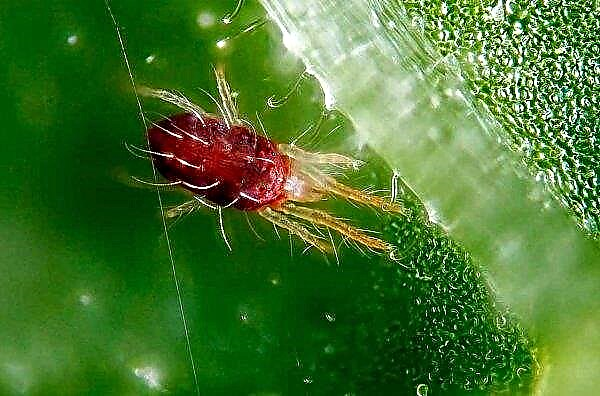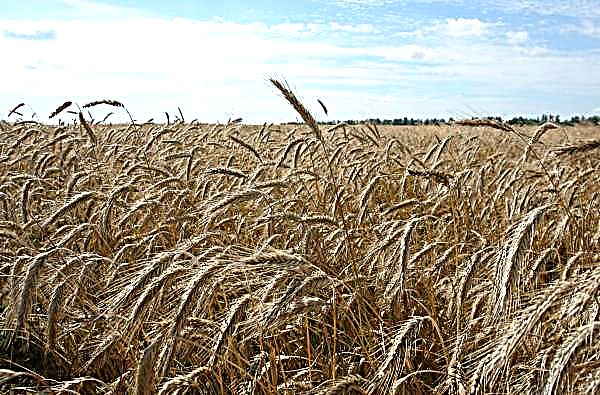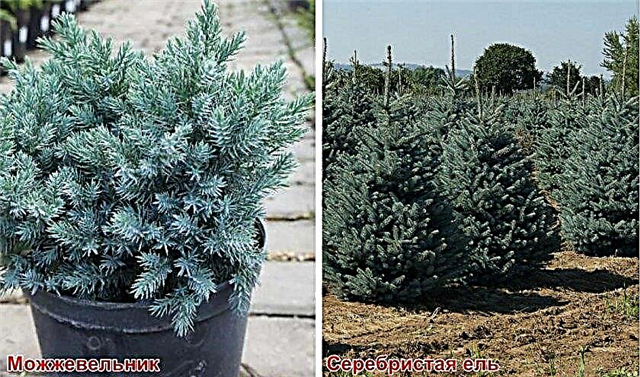One of the most interesting elements that can be added to your landscape is the water body. Artificial ponds are an ideal solution for small areas where there is no place for the construction of a pool. Built next to the house, it will create a refreshing, relaxing backdrop. The main thing is that it is safe for all living organisms.
Methods for cleaning artificial ponds
Spring is the most critical time of the year, because in addition to working on the site, care for the water body is added. The best thing you can do for a pond in your country cottage or in the yard is to clean it - whether it be deep cleaning or a small sanitary. To decide what kind of pond cleansing will be needed this season: chemical, mechanical, biological or using ultraviolet radiation, you need to determine the degree of pollution.
It should be checked if at the bottom there is a layer of dirt and all kinds of deposits that have sunk to the bottom, light water or dark color, so it becomes clear what needs to be cleaned - the bottom of the reservoir or only the surface. After clarification of these aspects, it will be possible to choose an acceptable technology and method of cleaning, decide on the selection of the necessary devices, equipment, tools for work. You may even have to resort to the use of special equipment or use the services of professionals.

The best time to clean the pond is early spring, ideally before the water temperature exceeds +12 ... + 13ºС. If cleaning is performed when the water is warmer, after the formation of colonies of bacteria, the ecosystem balance will be disturbed. In this case, the reservoir will survive another period of algal bloom before the bacteria colonies recover. Having figured out what the different cleaning methods are, you can choose the one that suits you best.
Biological
The biological treatment option in a natural way contributes to the restoration of the ecosystem of the water space in the country. For the time being, it is not necessary to remove fish and remove greens.
Important! The frequency of cleaning is an important factor. The optimal frequency of cleansing the pond is once a year. This can be done less frequently if, during the year, nets are used to prevent the accumulation of leaves and the removal of plant debris.
To clean the body of water in a biological way:
- to cultivate ameliorators (herbivorous fish) - Goldfish, tench or tilapia, which are suitable for cultivation in highly silted water bodies;
- plant higher plants - a giant reed, hogweed, calamus, yellowhead, water lily, reed, arrowhead and many others. others;
- apply specially created strains of microorganisms (preparations: “Komplezim”, “Pond Fizitabs”). Use such funds must be clearly according to the instructions, not exceeding the dosage;
- pick up a biological filter. It is recommended to install it during the construction of the reservoir. Thanks to properly selected filtration, it will be possible to obtain a natural ecosystem, which will be inherent in biological equilibrium, which will help simplify the cleaning of the pond.

Chemical
Floating aquatic weeds are harmful to the health of a lake or pond. Over time, they can inhibit the penetration of sunlight on plants growing deeper, which will lead to a deterioration in the process of photosynthesis and the production of oxygen, necessary for fish and other aquatic organisms. Duckweed is the vegetation that gives the pond an unsightly appearance. She lives in nutrient-rich bodies of water, such as garden ponds. Such vegetation can slowly destroy the lives of some of its inhabitants. This process can be controlled. Some owners of stagnant water tanks use chemicals for cleaning.
Important! Using powerful chemicals, it is necessary to exclude even a minimal increase in dosage, otherwise this drug will not be useful, but harm to fish and other living organisms.
These include:
- Markopool Chemicals - the polymer reagent is based on polymeric ammonium compounds. It contributes to the destruction of plankton spores, blocking the process of intercellular exchange of algae, which leads to their destruction.
- "Hth Algicide" - the basis of the drug is chlorine. The advantage of the tool is that it does not lead to a change in pH during the destruction of unwanted vegetation.

A type of chemical purification is the sorption method of purification of a reservoir. It works well to eliminate algae and duckweed. People whose land is close to fields should be reminded that agricultural chemicals can cause algal blooms in the pond. A mineral of the 21st century, an excellent purifier is called zeolite, which acts as an ion exchanger. It is capable of destroying a toxic substance such as ammonia and nitrates.
It is introduced into the filter of the device for circulating water (if any in the pond). Purified water will stop the growth of algae and duckweed. On a large area, duckweed colonies can be eliminated by sprinkling zeolite on the bottom of a reservoir at the rate of 2-3 kg into a 10 m² area. The effect of such a sorption purification method will last 1-2 years.
Did you know? The oldest known dam in the world — Java. It was built around 3000 BC. e. for storing water, in order to irrigate or water crops.
There are factors that contribute to lower pH in ponds. Rain usually has an acidic alkaline reaction - from 5.2 to 5.6, and industrial pollution can reduce it to 2.5. In areas with coniferous forests, rain penetrates through pine needles, making the pH even more acidic. Over time, it leaches all the minerals out of the soil. In addition, the clay bottom also has an acidic alkaline reaction, and decomposing plants can secrete additional acids.
Lime is crushed limestone (calcium carbonate) that neutralizes these acids and acts as a buffer, preventing a rapid change in pH. Often the owners of the pond and lakes chalk the bottom of the reservoir, since over time there is a decrease in the amount of lime in it, and if the object is not saturated with this chemical element, parasites will appear in the water and it will become cloudy.
 The best way to carry out liming is to evenly distribute the chemical substance along the bottom of the reservoir, by applying it with a hose. The least preferred method is to spread lime along the edge of the pond.
The best way to carry out liming is to evenly distribute the chemical substance along the bottom of the reservoir, by applying it with a hose. The least preferred method is to spread lime along the edge of the pond.
Quicklime will be able to perform important functions for the entire ecosystem of the pond:
- saturated with oxygen;
- eliminate the acid reaction of the soil;
- accelerate mineralization.
However, it is worth remembering that on poor sandy soils, the liming venture will be a waste of time. If a large amount of sludge is found at the bottom of the pond, then 0.1 kg of lime mass is added to the reservoir area of 10 m² at meter depth. For liming, you will need a scoop, with which chemistry will be added. Every 2 weeks from early May to mid-June, you need to repeat this procedure.
Ultraviolet radiation
There are many misconceptions regarding the use of ultraviolet radiation in water bodies. Some justify this by saying that when sterilizing the pond, all beneficial bacteria are killed. It's impossible. Not all water will pass through UV in one circulation, and beneficial bacteria will always remain in the biological filter and throughout the pond. Ultraviolet radiation with the right choice of lamp size for your body of water will reduce the number of harmful bacteria, as well as microscopic organisms that can be harmful to fish.
Algae make water in a green pond. Through such a color, it is impossible to see anything from a fascinating underwater life. This is especially true for those reservoirs that have been installed recently, because they have a very nutritious soil. And algae in such an environment develops like lightning. An unpleasant consequence is that the growth of oxygen plants will stagnate. Thus, the water will have a green color.

An excellent solution that will help get rid of cloudy pond water and harmful microorganisms is a UV filter with ultraviolet radiation (BX – 75UV, BX – 36UV, Super Pond CUV – 136 (36W), Bitron 18C). These and other systems ensure that the ponds are clean, thanks to the destruction of pathogens and the destruction of DNA in unicellular algae cells.
You need to understand that you can not rely only on a system of ultraviolet radiation to remove all forms of algae that inhabit the reservoir. String-type organisms that remain at the bottom will never be exposed to UV light unless there is another option for filtration in the pond. If ultraviolet radiation is used as a treatment, it must work in conjunction with an effective biological filter so that the growth of all types of algae can be controlled. The UV radiation system in the pond needs to be properly installed in order to be effective for the entire ecosystem.
Did you know? The water in Crater Lake in the USA has an unusually deep blue color. This water massif with a depth of 5943 m was formed about 7700 years ago after the eruption of the volcano - Mount Mazama. The transparency of the water in it is due to the minimum amount of precipitation.
The connected pump must have the correct flow rate, because water passing too quickly through ultraviolet radiation will not be treated properly. If algae is not destroyed by light, they will continue to multiply. Depending on the size of the pond, it may be necessary to install a piping system and valves to supply water through the light at the right speed. Of course, this will entail an increase in the initial cost of building the water mass and will require periodic maintenance.
Keep in mind that there are differences in the effectiveness of ultraviolet radiation. Much depends on the manufacturer here, since 25 watts from one company may not be as effective as the same indicators from another company. Before buying, you need to familiarize yourself with the parameters and capabilities of the purifier and be sure to add adequate biological filtration.

If the ultraviolet filter is the right size for the pond and is working properly, then the UV lamp will need to be replaced every year, ideally in the spring, to provide full radiation power throughout spring, summer and autumn. Replacing it, you first need to inspect the quartz sleeve for the accumulation of dirt of various deposits due to hard water.
Mechanical
Own pond on the site miraculously transforms the landscape. He is able to turn the plain territory of the site into a charming garden. At the same time, a traditional pond near a house or in a country house is most often small in size. For this reason, it is difficult to achieve natural biological and chemical equilibrium. Water quickly blooms or becomes covered with a film, duckweed grows on the surface, foliage falls, tree branches fall to the bottom, and the fish starts to hurt. Therefore, a small pond requires, in some way, even more attention and care than a large one.
An excavator, tractor or team of specialists is not required to clean the mini-pond. Here you can manage yourself. It is enough to organize a system of constant water filtration and from time to time to conduct mechanical cleaning of the reservoir from pollution. To do this, you need to use different types of filters. Special filtering equipment will be required. This can be either a multi-chamber device that combines the whole range of filters in one housing, or separate equipment.

Filtration functions can be supported by modern pool technologies such as circulation pumps, skimmers, bottom and mineral deposits such as zeolite, tuff, limestone, gravel and microbial vaccination.
The following filter types are used:
- Mechanical - holds small particles of garbage.
- Chemical - restores the normal composition of water, binds ammonia and metal compounds, dissolves algae.
- Biological - normalizes the nutrient content in water with the help of special bacteria.
- Ultraviolet - fights bacteria and unicellular algae.
For mechanical cleaning, a pump is often used to pump water through a filter with quartz sand, special granules or gravel, separating and removing any waste or solid particles. In fact, it acts like a vacuum cleaner. The advantage of submersible equipment is that it is “hidden” at the bottom of the pond and does not spoil the appearance of the tank. If this device is installed on the shore, then it can be masked with decorative stones or hidden in the bushes. Clogged filter material is replaced or washed if necessary.
The most primitive way to mechanically cleanse a pond is a butterfly net. They can collect vegetation and fallen leaves from the water surface. After mechanical filtration, the water may be crystal clear, but toxic substances such as ammonia dissolved in it will remain. That is why it is often said that a clean water surface is not always healthy. So, it becomes clear that biological filtration is indispensable.
For mechanical cleaning of bottom water and the walls of the pond, underwater vacuum cleaners are used - manual or automated. In fact, these are ordinary vacuum cleaners that allow you to keep the bottom clean and remove deposits on the bottom (sludge, vegetable debris and fish excrement). All waste is collected in the tank of the vacuum cleaner, which after filling is emptied through a special drain hose.

Is it possible to clean with a drainage or fecal pump
There is an innovative equipment - hand held mini dredgers that can remove bottom sediments in artificial reservoirs. Portable pumps of various Piranha models have proven themselves well.
Some pond owners claim that a drainage pump can handle the task of cleaning only a small body of water. They recommend to engage in this process in the spring during the flood season, pouring sludge with water on the field or in the garden. With a small amount of water, you can clean through a sand filter. However, there are those who insist on cleaning the water body only with a fecal pump, since it is he who can 100% cope with the task. It is worth noting that powerful equipment that can cope with this task is expensive, so it may make sense to think about renting it or hiring specialists for such work.
How best to clean the bottom and surface of the pond
Complete pumping of water from an artificial pond should always be the last method used to clean a water body. As a result, in the future, the reservoir may become even more dirty, as the natural ecosystem will be disrupted. Even if the water in the pond looks dirty or muddy, this does not always mean its poor quality and the need for discharge.
It has many microorganisms and millions of beneficial bacteria. They are constantly working to destroy harmful substances such as ammonia and nitrites. Useful microorganisms are necessary for ponds that contain fish. They form the basis of the "nitrogen cycle" because they are able to maintain balance in the pond.Replenishing more water after draining can lead to even greater disruption, since there is usually a lot of chlorine in tap water, which is toxic to most natural microorganisms.

If the level of pollution has increased, you need to manually remove the debris from the surface of the pond manually (using a dustpan, rake or a special net). To create circulation at the bottom of the pond, it is necessary to use lower drainage systems, aeration plants, and circulation nozzles. Vacuuming the bottom of the pond is very convenient today. In modern vacuum cleaners, there are two pumps for continuous evacuation, thanks to which you can get high-quality cleaning without negative side effects.
How to clean a pond from sludge without draining the water
Ultraviolet can be used as a prevention of the formation of sludge. A device with emitting lamps is placed in a pond, and a special mechanism cleans the bottom. In order to get rid of siltation of a water body, one can use mechanical, chemical and biological cleaning methods. A small pond is cleaned with the help of pumps, pumps, filters, and a large one - using dredgers, amphibious apparatuses and excavators.
Pond Care
You need to take care of the pond on your site systematically, without waiting for the moment when only specialists with special equipment can help. The water content will change from time to time, depending on the season.
There are a lot of maintenance work in spring and summer:
- planting new plants;
- timely garbage collection from the surface of the reservoir;
- feeding fish;
- maintaining the purity of water;
- installation of sand or gravel filters;
- adding pure water to maintain salt balance.

In autumn and winter, the main issue is maintaining the viability of the pond. Dead parts of plants and fallen leaves must be removed before they sink to the bottom. To preserve healthy fish and clean water, do not overload the ecosystem with too many fish.
Well-kept ponds are beautiful, serene places where you can gather for relaxation. An ideal reservoir is not one that is beautiful only at first, but one that is beautiful from year to year. Only with regular cleaning, removal of dirt and care can the desired result be achieved.












